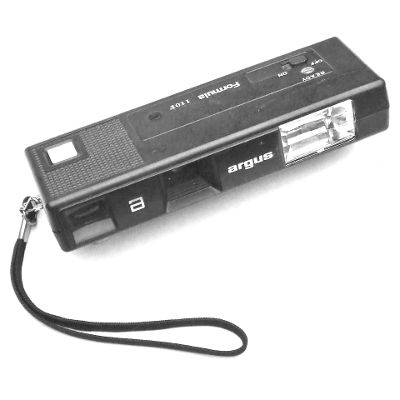Photography has undergone a remarkable transformation, evolving from hefty film cameras to sleek, portable devices. The Argus Formula 107 stands out as a pivotal landmark in this evolution. Small, user-friendly, and budget-friendly, this camera initiated a new era of photography accessible to everyone. But what made it so special? Let’s delve into the ascent of pocket cameras, highlighting this iconic model.
Why Were Pocket Cameras Revolutionary?

The 1970s and 1980s marked a monumental shift in photography. Pocket-sized cameras like the Argus Formula 107 offered a straightforward way for people to document their lives. Unlike the traditional 35mm film cameras, which required more technical expertise and bulky film rolls, pocket cameras were all about ease of use and portability.
Their success stemmed from the introduction of the 110 film cartridge. This innovation eliminated the need for large film spools, allowing manufacturers to design much smaller cameras. The Argus Formula 107 capitalized on this, proving ideal for casual photographers who wanted to point and shoot effortlessly.
The Argus Formula 107: Features and Design
Zooming in on the Argus Formula 107, this model quickly gained popularity due to its mix of usability, portability, and smart features. Here’s a closer look at why it became a favorite:
Compact and Portable
The standout feature of the Argus Formula 107 was its compact design. Small enough to fit into a pocket or purse, it met the growing demand for cameras that could be taken anywhere. This model revolutionized casual photography by allowing people to capture spontaneous moments without the burden of heavy equipment.
Built-in Flash for Low-Light Photography
While small, the Argus Formula 107 didn’t sacrifice functionality. One of its marquee features was the built-in flash system located next to the lens. This enabled users to take photos even in low-light conditions, making it versatile for indoor and nighttime photography. This was a significant technological advancement since many small cameras at the time couldn’t handle dim lighting effectively.
User-Friendly Controls
The Argus Formula 107 was also cherished for its simplicity. With straightforward controls for focusing and exposure, anyone could pick it up and start shooting. This democratized photography, making it accessible to people who might have found traditional cameras too technical.
110 Film Format: A Perfect Match
The use of 110 film was a genius move for pocket cameras. This film format came in a small, easy-to-load cartridge, eliminating the hassle of manually threading traditional film. It was the perfect match for the Argus Formula 107’s sleek design and simplicity. The cartridge also reduced the risk of light exposure, a common issue with older cameras.
Capturing the 1970s: A Cultural Shift
The 1970s and 1980s were transformative years for photography. Cameras like the Argus Formula 107 played a crucial role in how people documented their lives. Before pocket cameras, photography was mainly for professionals or hobbyists with the resources to invest in equipment and film development. With user-friendly, affordable devices like the Formula 107, everyday people could now capture snapshots of their vacations, family events, and candid moments.
During this time, the Argus Formula 107 became a household name due to its blend of affordability and functionality. Its portability made it perfect for family trips, hikes, and weekend getaways, allowing users to preserve moments with just the click of a button.
The Legacy of the Argus Brand

Argus was a well-respected name in photography throughout the 20th century. Founded in the United States, the company was renowned for making affordable yet durable cameras that catered to the general public instead of just professionals. Argus played a significant role in democratizing photography in post-war America, enabling millions to capture their memories on film.
Although Argus no longer dominates the market, its impact endures. The Formula 107 represents an era when photography became more accessible to the general public. Its compact size, simplicity, and robust design made it a beloved choice for amateur photographers and a sought-after vintage item today.
The Decline of the 110 Film Format

As with many technological advancements, the dominance of the 110 film format was short-lived. By the late 1990s, digital cameras began to eclipse film alternatives, offering unmatched convenience without the need for film. However, for those who experienced the 1970s and 1980s, the Argus Formula 107 and similar models remain nostalgic treasures. These cameras were the first to make capturing moments so effortlessly easy, and their retro appeal is still celebrated by collectors today.
Conclusion: A Glimpse into the Past
The rise of the Argus Formula 107 and other pocket cameras marked a defining moment in photography. The days of cumbersome equipment and complex film processes were over; now, anyone could be a photographer. The 110 film format, compact design, and user-friendly features made the Argus Formula 107 a cultural icon, capturing everything from family vacations to spontaneous moments with friends. Though the era of pocket cameras has faded, their legacy lives on as a symbol of a more straightforward, personal time in the history of photography.
The Argus Formula 107 will always be celebrated as a key player in bringing photography to the masses—a true icon of its time.